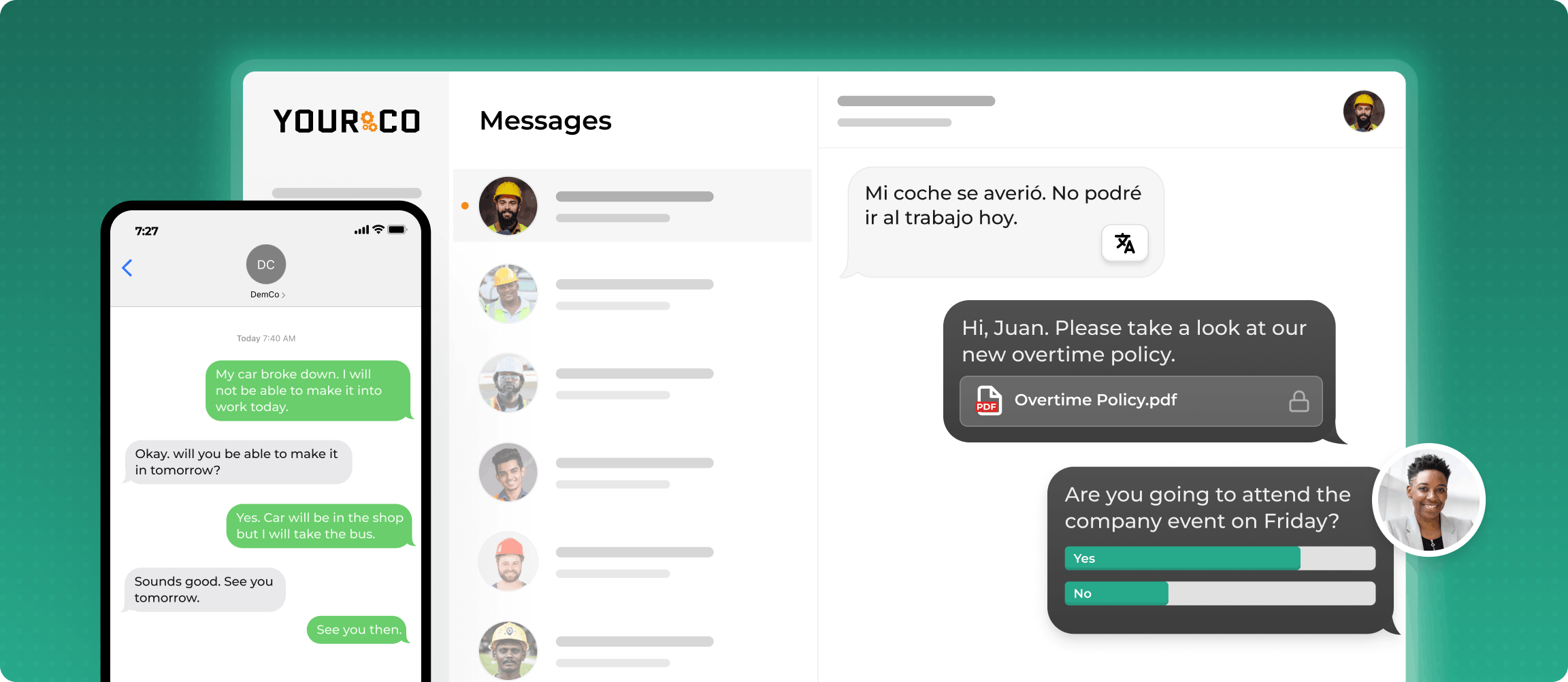Split Shift Strategies for Your Workforce


Split shifts can either significantly boost your business efficiency or introduce unnecessary stress into your workforce, depending entirely on how they're managed. In service industries, retail environments, transportation sectors, and even healthcare facilities, split shifts have become an indispensable scheduling tool, allowing businesses to optimize staffing during fluctuating peak times without incurring excess labor costs.
However, when handled poorly, these fragmented schedules often lead to employee burnout, decreased morale, and operational inefficiencies. Balancing operational demands with employee well-being requires careful planning, clear communication, and reliable technological support.
In this article, we'll explore practical strategies and essential tools to help your organization manage split shifts effectively, ensuring productivity stays high and your employees remain engaged and satisfied.
The Mechanics of Split Shifts
A split shift divides a work schedule into two or more segments separated by a substantial break, typically 60 minutes or more, making it longer than a standard meal break. This scheduling approach works well in industries with fluctuating demand patterns throughout the day, like the service industry.
A restaurant server might work from 11 AM to 2 PM, covering the lunch rush, then return for the 5 PM to 10 PM dinner service. Bus drivers frequently work split shifts to handle morning and evening commute peaks while avoiding the midday lull. Retail associates often cover opening and closing shifts with a significant afternoon gap.
This scheduling strategy directly responds to customer demand fluctuations, allowing businesses to staff efficiently during peak periods without carrying extra labor costs during quieter times.
Advantages of Split Shifts
Split shifts ensure peak coverage precisely when needed. Restaurants can staff heavily during meal rushes, transportation companies can cover commuter surges, and healthcare facilities can ensure adequate coverage during important care periods.
Employees can find hidden benefits in these arrangements, too, fostering happiness and improved work-life balance. For example, a parent working from 7 AM to 11 AM and 3 PM to 7 PM might attend their child's afternoon activities. Students can take classes during their extended breaks, turning scheduling challenges into opportunities.
The off-peak commuting that often accompanies split shifts can significantly reduce travel stress, save time, and even lower transportation costs due to less traffic and increased fuel efficiency during non-rush hours.
Drawbacks and Challenges of Split Shifts
Unfortunately, the fragmented workday can also make employees feel perpetually "on call,” creating scheduling uncertainty that increases stress levels and decreases overall job satisfaction. Down the line, this can negatively impact employee engagement.
Extended workdays that start early and finish late contribute to fatigue, especially in physically demanding industries like manufacturing or healthcare. A warehouse worker might face a 6 AM to 10 AM shift followed by a 2 PM to 6 PM shift, creating a 12-hour span with only a brief opportunity for genuine rest.
Transportation becomes a major issue when employees must commute multiple times daily. For managers, the administrative complexity grows exponentially. Coordinating coverage while accommodating employee preferences and tracking regulatory compliance creates significant overhead.
Split shifts can also cause problems with team cohesion. When employees work different schedules with minimal overlap, there might be invisible barriers to knowledge transfer and collaboration.
Effective Management Strategies for Split Shifts
Implementing a strong employee experience strategy is crucial when addressing challenges associated with split shifts and improving overall employee retention. Successful management of these fragmented work schedules requires thoughtful planning, clear communication, and intentional efforts to support employee well-being. The following proven strategies provide a structured approach for managing split shifts effectively.
Clearly Communicate Business Needs and Rationale
Transparency is foundational for gaining employee buy-in for split shifts. When workers understand the reasons behind their schedules, they're more likely to accept and adjust to them willingly. Clearly articulate how split shifts align with operational demands, customer service requirements, and peak business periods. Provide context regularly through direct team meetings, internal newsletters, or quick SMS updates, helping employees feel informed and valued.
Implement Employee Preference Systems
Empowering employees to have a say in their schedules significantly boosts morale and satisfaction. Create structured systems, such as digital surveys or scheduling apps, allowing employees to indicate their preferred shift segments, break durations, and days off. Incorporating these preferences into scheduling decisions can dramatically enhance employee engagement, reduce absenteeism, and build long-term goodwill.
Ensure Fair Rotation and Equitable Shift Distribution
Prevent resentment by implementing fair rotation systems that distribute desirable and less desirable shifts evenly across the workforce. Utilize transparent processes, such as a points-based system, to reward employees who willingly take on challenging or less popular shifts, granting them priority scheduling preferences in future rotations. This strategy demonstrates organizational fairness, boosts motivation, and reduces perceptions of favoritism.
Thoughtfully Plan Break Durations and Infrastructure
Break durations during split shifts must be carefully considered—either short enough for convenience or adequately long to be genuinely restorative. For lengthy midday breaks, provide supportive infrastructure such as comfortable break rooms, onsite rest facilities, or subsidized nearby amenities. For example, transit authorities often equip break rooms with relaxing spaces and refreshments, acknowledging the unique demands placed on workers away from home during extended breaks.
Conduct Regular Wellbeing Check-Ins
Proactively monitor employee wellbeing to catch burnout and stress before they escalate. Regular pulse surveys, informal check-ins, and scheduled one-on-one meetings help managers detect early signs of employee fatigue or dissatisfaction. Use these insights to tailor interventions, provide additional support, or adjust schedules proactively, ensuring your workforce remains healthy, engaged, and productive.
Foster Intentional Team Building and Connectivity
Split shifts inherently challenge team cohesion due to reduced interaction and varying schedules. Counteract these effects by creating intentional team-building opportunities. Facilitate regular communication using accessible platforms such as SMS-based channels or video conferencing for periodic all-hands meetings. Organizing occasional group activities during common availability periods helps maintain team spirit, encourages collaboration, and enhances organizational unity.
Streamline Shift Change Management
Efficiently managing shift transitions is critical for operational continuity and employee satisfaction. Develop standardized procedures and utilize scheduling technologies that clearly communicate shift details, responsibilities, and handover notes. Provide employees with easy-to-access tools—such as mobile scheduling apps or SMS reminders—that notify them of shift changes in real-time, reducing confusion, minimizing disruptions, and ensuring smooth operational transitions.
By integrating these comprehensive strategies into your split shift management approach, your organization can significantly improve employee experiences, operational efficiency, and overall business outcomes.
Legal and Compliance Considerations
Split shift regulations vary dramatically by jurisdiction, creating compliance challenges for multi-state employers. It's critical for businesses to understand and adhere to local labor laws to avoid potential penalties, legal disputes, and employee dissatisfaction. The following examples illustrate just a few key regional regulations; however, businesses should thoroughly review local laws to ensure full compliance. For detailed and specific information applicable to your organization, always check with your state’s labor department or consult with a labor law professional.
- California leads with worker protections, requiring a "split shift premium" equal to one hour at minimum wage when shifts are separated by more than 60 minutes (with specific calculation methods when employees earn above minimum wage).
- Washington D.C. requires additional compensation for split shifts with more than one hour between segments, with exemptions for certain industries.
- Chicago's predictive scheduling ordinance mandates advance notice for schedule changes, significantly impacting split shift flexibility.
- New York enforces "spread of hours" provisions requiring extra pay when the first and last hours of the workday span more than 10 hours, regardless of actual hours worked, directly affecting most split shift arrangements.
Industry-specific regulations create additional layers of complexity. Transportation workers face Hours of Service limitations, healthcare facilities must comply with patient-staff ratio requirements, and hospitality businesses must follow tip credit implications that vary by jurisdiction.
Tools and Technologies for Implementing Split Shifts
Various workforce management tools help organizations implement and manage split shifts effectively:
Workforce management software: These comprehensive solutions offer scheduling features that account for demand forecasting, labor laws, and employee preferences. Most include mobile apps for employees to view schedules and request changes.
- Strength: Comprehensive, feature-rich.
- Weakness: Complex, less accessible for frontline workers.
Mobile scheduling apps: Standalone applications allow managers to create, publish, and modify schedules while employees can check their shifts, swap with colleagues, and request time off from their phones. Exploring mobile workforce scheduling options can enhance flexibility and efficiency.
- Strength: Convenient, supports flexibility.
- Weakness: Requires smartphones, app downloads, and internet access.
SMS communication platforms: Text messaging reaches 98% of employees within minutes, according to mobile messaging statistics. Yourco's platform enables instant shift coverage alerts, automated reminders before each shift segment, and two-way communication for quick responses to schedule changes.
- Strength: Universally accessible, simple, instant communication, no apps or internet needed, multilingual capabilities ideal for frontline employees
- Weakness: Limited visual scheduling interfaces.
Digital time clocks: Modern time tracking systems help enforce compliance with split shift regulations by accurately recording work segments, breaks, and total hours.
- Strength: Ensures accurate compliance tracking.
- Weakness: Not suitable for proactive schedule communication.
AI-powered scheduling assistants: Emerging tools use artificial intelligence to optimize schedules based on business demand, employee preferences, and regulatory requirements.
- Strength: Optimizes schedules efficiently.
- Weakness: Technologically complex, requires significant resources.
Employee feedback systems: Dedicated tools gather input about schedule satisfaction, helping managers refine their split shift approach based on real employee experiences.
- Strength: Captures employee satisfaction effectively.
- Weakness: Not designed for immediate schedule updates or communication.
Compliance management software: Specialized applications track changing regulations across jurisdictions, alerting managers to potential issues with split shift arrangements.
- Strength: Ensures regulatory compliance.
- Weakness: Narrow focus, lacks direct communication functionality.
Connecting Your Team During Split Shifts, One Text at a Time

Managing split shifts effectively requires overcoming significant operational and communication challenges. Yourco's SMS-based communication platform directly addresses these issues, providing managers and employees with a seamless, instant, and reliable channel to navigate the complexities of fragmented workdays.
The administrative burdens associated with split shift scheduling, such as handling frequent shift changes and communicating clearly across multiple teams, are simplified by Yourco’s easy-to-use messaging system. Employees receive timely shift reminders, schedule updates, and urgent coverage alerts right on their personal devices, ensuring they always stay informed. Yourco also removes barriers posed by more traditional communication methods, such as complicated apps or inaccessible emails, by using straightforward text messages that require no internet connection or specialized training.
Yourco’s Enterprise Bridge further strengthens organizational communication by providing a dedicated one-way corporate broadcast channel. This ensures critical updates and announcements from corporate offices efficiently reach multiple locations simultaneously, while still allowing local managers to oversee two-way communications at the site level via the integrated analytics dashboard.
The comprehensive Analytics Dashboard offers detailed insights into workforce performance, attendance, labor tracking, and shift adherence, empowering managers to proactively identify issues and optimize scheduling based on real-time data. With location-specific metrics, organizations can promptly address absenteeism, staffing gaps, and operational bottlenecks, enhancing overall productivity and reliability.
Moreover, Yourco enhances employee well-being by facilitating regular check-ins, gathering shift preferences, and distributing equitable scheduling updates that foster transparency and fairness. With built-in features like automated translations and HRIS integrations, Yourco supports diverse teams, ensuring all workers, regardless of language or location, feel equally included and valued.
By enabling consistent communication and simplifying administrative tasks, Yourco not only streamlines operations but also boosts team cohesion, reduces employee burnout, and increases overall workplace satisfaction. Experience firsthand how Yourco transforms split shift management into a competitive advantage.
Try Yourco for free today or schedule a demo and see the difference the right workplace communication solution can make in your company.



